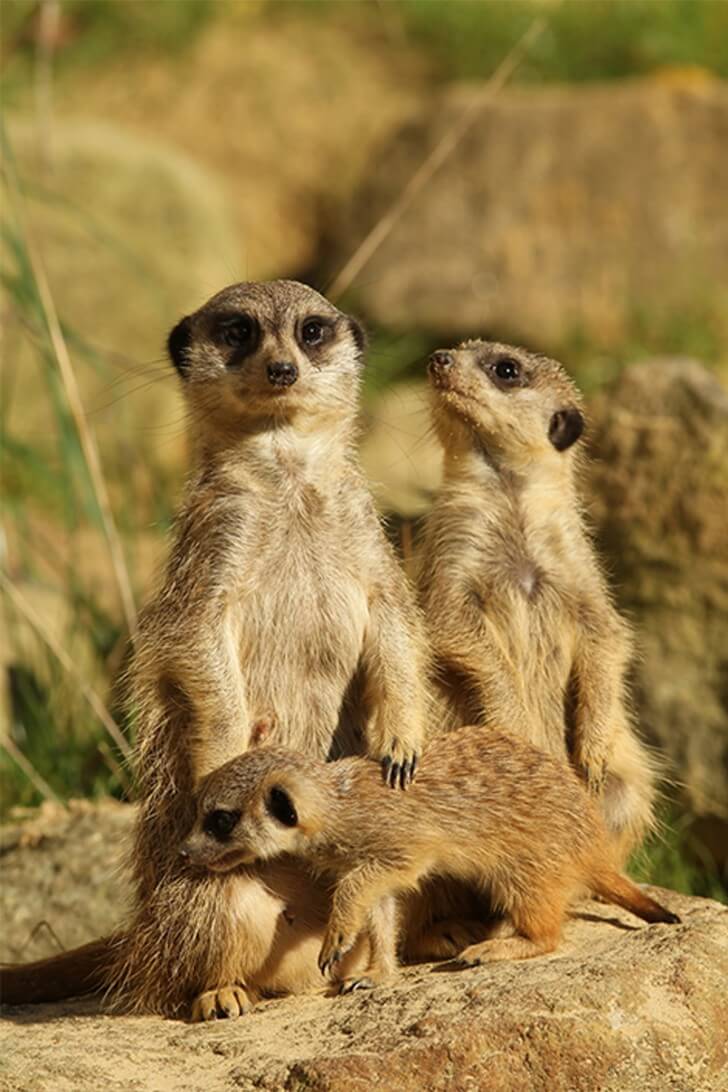BBC Earth newsletter
BBC Earth delivered direct to your inbox
Sign up to receive news, updates and exclusives from BBC Earth and related content from BBC Studios by email.
Mammals
When a meerkat stands on a high point, scanning the horizon nervously, anxious eyes flicking from left to right, or curious heads pop up as an unusual noise is heard, like neighbours peeping out from behind a curtain, we know immediately what’s going on. It all seems very… well… us.

Could this be why meerkats frequently top many 'favourite animal' lists, because we need to see our own behaviour reflected to feel a link with a particular animal, or are we simply projecting human behaviour on to meerkats because it’s what we want to see? Let’s investigate a bit of meerkat behaviour and see what lies behind it…
The meerkat’s alert expression is very familiar, largely because it looks like any one of us peering down the road waiting impatiently for the number 39 bus. It’s not curiosity though, it’s a life or death security measure. For a bird of prey or a snake, the meerkat is a perfect meal so any shadow across the desert floor or movement in the distance is enough for the sentry meerkat to sound the alarm and send the rest of the mob scurrying back to its burrow.
One meerkat will act as sentry as the others forage for food, after the initial morning sunbathe; the sentry is replaced after a while by another meerkat, so the first can also feed. Now that is intelligent human behaviour — shift work so everyone can get to the canteen.
Meerkat kittens scrapping and wrestling before being separated by an exasperated adult are all too familiar to any human parent, or indeed anyone who’s been to a supermarket on a Saturday morning. This tussling isn’t just sibling rivalry though, it’s all part of the learning experience. Fiercely territorial, meerkats often find themselves having to defend their area against a rival meerkat group, sometimes in a fight to the death, so the earlier they can deal with a bit of rough and tumble, the better.

Do we find pudgy meerkat kittens so appealing because they look like human babies? Very probably. Austrian ethologist Konrad Lorenz, in 1949, theorised that a large head, round face, podgy body and big eyes are associated in our minds with an infant human baby and triggers care-taking behaviour in us. This ‘Kindchenschema', or baby schema, serves a vital function; we have to fall in love with our babies to ensure their survival. We talk about “melting," “going gooey” or wanting to “eat up” babies and baby animals, which is our attempt to articulate the huge dopamine rush we are programmed to get from the Kindchenschema.

Adult meerkats will babysit other’s children and as parents, they’re cautious and good teachers. When your favourite snack is a scorpion, introducing this to your babies as elevenses can be a pretty risky business, so mama meerkats chop the tails off before giving the scorpion to their offspring. They’ll also bring their babies live insects and teach them how to catch and eat them. Bit like the first time a child uses chopsticks, but probably not so messy.

So the human behaviour demonstrated by meerkats turns out to have very sound environmental, and occasionally bloodthirsty, reasons behind it. Which is fair enough; meerkats don’t get much out of humans identifying with them, apart from international television careers? For domestic animals, though it’s a boon. Researchers at the University of Portsmouth have discovered that dogs produce more facial movements, including raising their eyebrows and making their eyes appear bigger (puppy dog eyes) when a human is paying attention to them. So, our need for the familiar is actually changing animal behaviour…or are we the ones being manipulated into just handing over more dog biscuits?